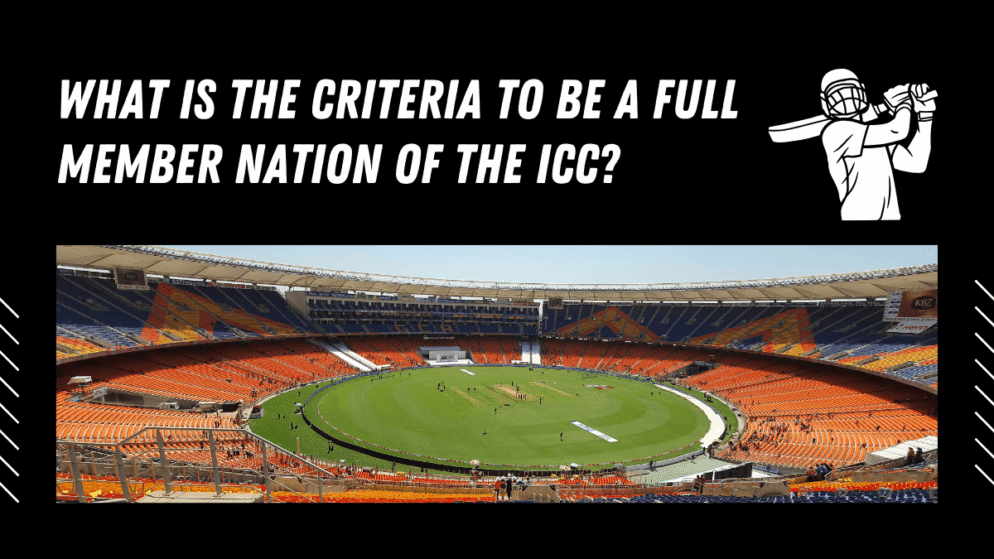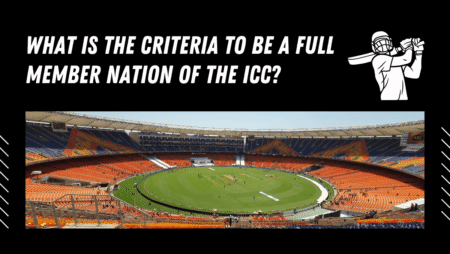

The sport of cricket is played globally. Professionally, at an international level, the International Cricket Council manages the sport to give the cricket season a structure. It gives memberships to cricket playing nations depending on a criteria set by them. Two types of memberships are available – full and associate. This article provides an explanation on how nations can become a full member of the International Cricket Council.
As of June 2025, there are only 12 teams who have a full membership status. These teams are allowed to play test matches, vote in meetings of the International Cricket Council, and are qualified to play limited overs cricket recognized by the council. The 12 full member nations are India, Australia, England, West Indies, South Africa, New Zealand, Sri Lanka, Zimbabwe, Ireland, Afghanistan, Bangladesh, and Pakistan.
The four principle criteria based on which the International Cricket Council judges a nation’s prowess in cricket to become a full member are performance, participation, infrastructure, and development.
PERFORMANCE
A team must have defeated an existing full member nation in either the T20 or the 50-over World Cup either in the qualifiers or in the main event. Alternatively, the council considers at least four wins against full member nations in either of the limited overs formats that are contested as a part of a bilateral or triangular series in the last eight years.
A team is required to have a ranking in the One Day International format as released by the International Cricket Council. If not, then they must have secured one of the top two positions in the Intercontinental cup held in the last eight years. Furthermore, it is required for a team to feature in at least three World Cups held in the last eight years.
The criteria also extends to women’s cricket. A nation must have sent it’s team to the T20 or the 50-over World Cup of women’s cricket in the past four years. Additionally, the women’s side must feature in the rankings. Moreover, the nation’s team must have featured at least twice in the U19 World Cup contested in the last eight years.
PERFORMANCE
A cricket-playing nation must have a structured junior circuit which facilitates their progress to make it to the national team. This applies to U19 and women’s cricket too. It is important that a team secures List A status in both One Day International and T20 International cricket. Furthermore, in both these formats, there must be a national event which features at least three teams. Each teams must have a sufficient pool of players which ensures consistency in the team selection process.
INFRASTRUCTURE
Each nation must have at least two grounds that meet the council criteria. An accreditation by the International Cricket Council means that 50-over matches can be contested on that ground. Moreover, the number of grounds in a country must be enough to host domestic competitions. Facilities to accomodate touring nations and their internal travel are also assessed.
DEVELOPMENT
There must be a coordinated program developed by the national cricket body of the nation for talent acquisition. It must have programs to train umpires, coaches, and curators. These programs must be recognized and have the support of the government.
The country’s media must be active enough to cover regional cricket tournaments. A cricket culture ranging from club cricket to international cricket must be prevalent. The political administration must be strong enough to have a national director who oversees the cricket administration at each tier.
Thus, to become a full member nation of the International Cricket Council, a team is expected to have a system that is accountable for the coordinated and efficient growth of the sport in the nation.








